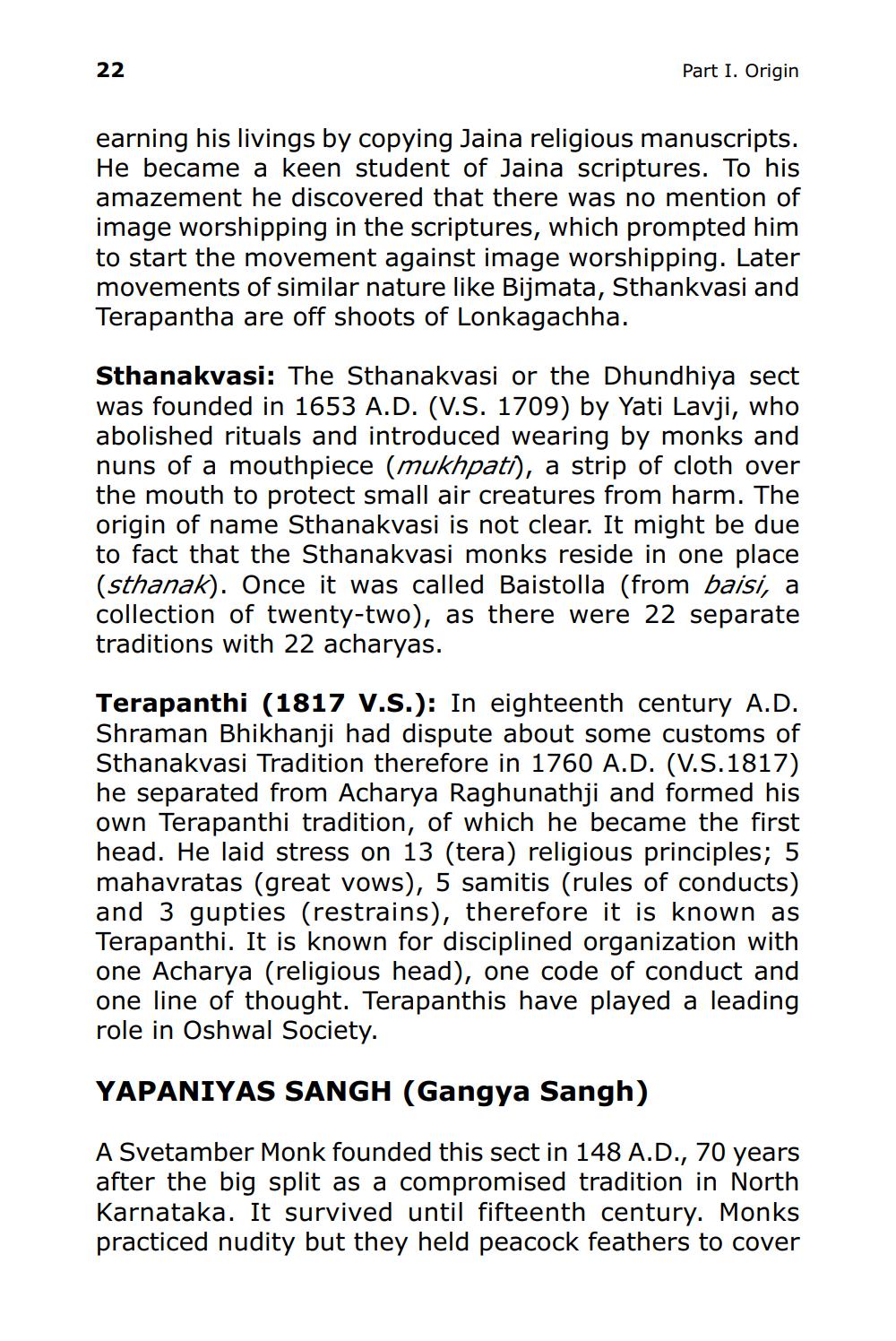________________
22
Part I. Origin
earning his livings by copying Jaina religious manuscripts. He became a keen student of Jaina scriptures. To his amazement he discovered that there was no mention of image worshipping in the scriptures, which prompted him to start the movement against image worshipping. Later movements of similar nature like Bijmata, Sthankvasi and Terapantha are off shoots of Lonkagachha.
Sthanakvasi: The Sthanakvasi or the Dhundhiya sect was founded in 1653 A.D. (V.S. 1709) by Yati Lavji, who abolished rituals and introduced wearing by monks and nuns of a mouthpiece (mukhpati), a strip of cloth over the mouth to protect small air creatures from harm. The origin of name Sthanakvasi is not clear. It might be due to fact that the Sthanakvasi monks reside in one place (sthanak). Once it was called Baistolla (from baisi, a collection of twenty-two), as there were 22 separate traditions with 22 acharyas.
Terapanthi (1817 V.S.): In eighteenth century A.D. Shraman Bhikhanji had dispute about some customs of Sthanakvasi Tradition therefore in 1760 A.D. (V.S.1817) he separated from Acharya Raghunathji and formed his own Terapanthi tradition, of which he became the first head. He laid stress on 13 (tera) religious principles; 5 mahavratas (great vows), 5 samitis (rules of conducts) and 3 gupties (restrains), therefore it is known as Terapanthi. It is known for disciplined organization with one Acharya (religious head), one code of conduct and one line of thought. Terapanthis have played a leading role in Oshwal Society.
YAPANIYAS SANGH (Gangya Sangh)
A Svetamber Monk founded this sect in 148 A.D., 70 years after the big split as a compromised tradition in North Karnataka. It survived until fifteenth century. Monks practiced nudity but they held peacock feathers to cover




